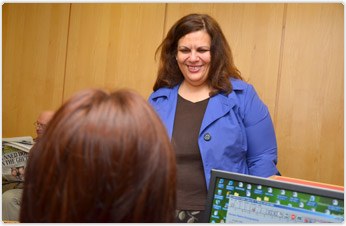Patient journey
The Treatment Centre has 7 operating theatres and carries out a wide range of operations under local and general anaesthetic. We have more than 40 consultants who regularly work in the department, as well as approximately 60 staff.
The most common procedures carried out at the Treatment Centre are:
- hernia repairs
- varicose veins
- laparoscopic (keyhole) surgery
- cataracts
- bladder investigations
- laser surgery
The Treatment Centre is open Mon–Fri, 7am–8pm with appointment times staggered throughout the day to avoid long waiting times.
When you arrive with your escort, they will be told approximately what time you will be in recovery. Your escort will not be able to stay with you in the Treatment Centre. Please note that your appointment time is not the time you will be going into surgery.
Unless you are exempt, you will be charged normal prescription charges for any drugs prescribed for you to take home.
We suggest that you have an adequate supply of painkillers at home before you come in for your operation (available from a chemist).
Patient journey
One of the Treatment Centre theatres is designated for hand surgery. We receive referrals for the regional emergency hand service from the whole of the south east of England.
We have documented a patient’s journey at the Treatment Centre to help reduce any anxiety you may be experiencing. Susan has come to have a foreign object removed from her finger.

Susan arrives at the Treatment Centre reception. She is asked by the receptionist to confirm her details. After taking a seat in reception she is called through into the department to get ready for her operation.

After changing into a hospital gown, Susan puts her belongings into her designated locker.

Susan’s nurse takes a short medical history, including asking about any drug allergies, and taking her pulse and blood pressure. Also at this point a surgeon will see Susan to have a look at her hand and have her sign the consent form.

A theatre nurse walks with Susan to the operating room.

After lying on the operating table, Susan’s finger is injected with local anaesthetic. This stings slightly and after a few minutes her finger will feel numb, but she will still be able to feel the surgeon touching her.

Once the local anaesthetic has worked the surgeon removes the foreign body from Susan’s finger.

A sterile dressing is put over the wound.

Susan is escorted out of the operating theatre to the recovery area.

After a cup of tea and a biscuit Susan gets dressed. A sling is put on her arm to prevent swelling and pain. She is given discharge advice leaflets and antibiotics. An appointment is arranged for a further check-up in the outpatient clinic.

